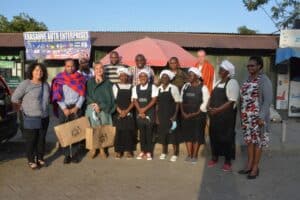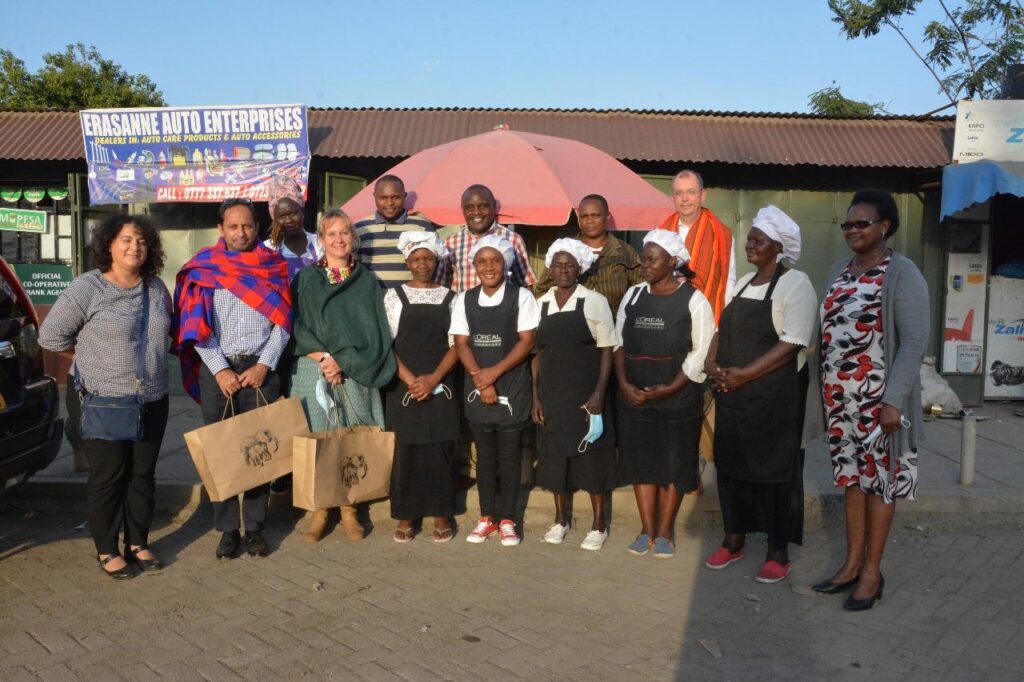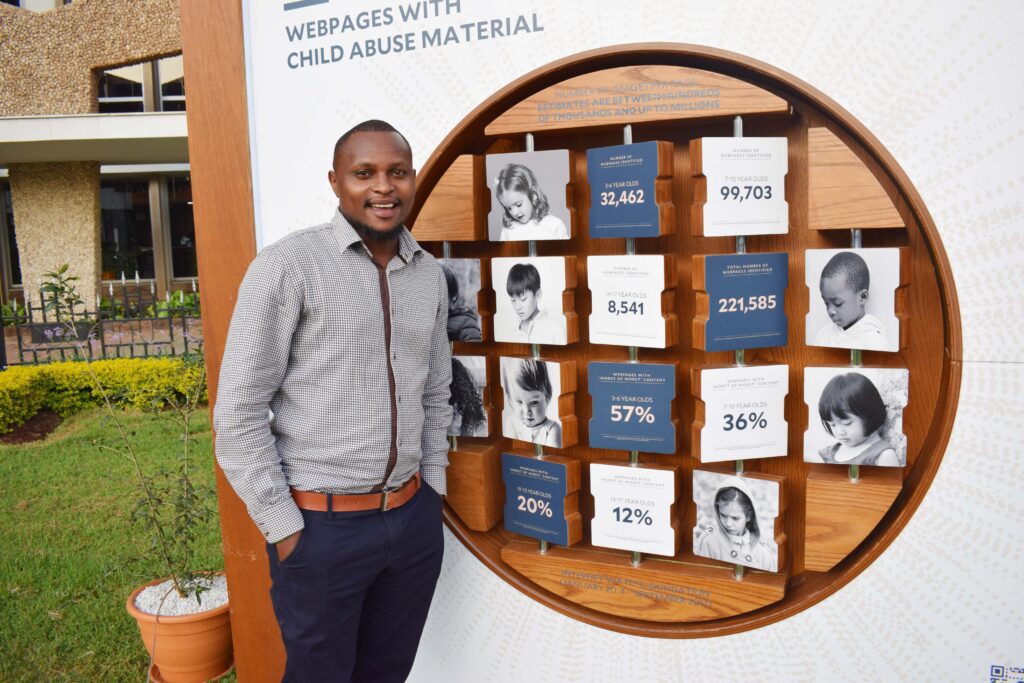
The Influence of Globalization on Child-Parent Relationship(s)


We live in a globalized era where the world has become a global village with technological advancements making it easier for the world to connect. Many economies have opened, helping more and more countries improve the living standards of their citizens and empowering many to step out of ‘traditional’ set expectations. Although greatly beneficial, globalization is a double-edged sword that has come with a cost. It has considerably changed the family dynamics and its structures through the ‘fluidity’ of gender roles.
According to Oláh et al., 20181, globalization has seen gender roles become more ‘fluid’ with each gender taking up chores that were previously restricted to the ‘other’. Gender roles for a long time have influenced how parents communicate with each other and with their children. As parents work to fit into today’s world and expectations, a great shift in the parent-child relationship has been caused.
Through the ‘Building Family Resilience: Women of Faith in Action’ project launched by Arigatou International-Nairobi in partnership with the Global Community Engagement and Resilience Fund (GCERF), in Mombasa Kenya, it was revealed that a negative shift in the parent-child relationship has left children vulnerable to exploitation. The interviewees attributed the negative shift to parental negligence, as they try to navigate the globalized world. This has left children feeling alone, causing them to display various emotions that the parents fail to notice, and that are taken advantage of by violent extremists.
Though they are minor contributors to an unjust world, children suffer the most in contemporary societies which are characterized by the need for children to be more engaged with their parents. The overreliance on online connection due to globalization has resulted in poor communication between parents and their children leading to a lack of trust. Due to this, children are left vulnerable to recruitment into extremist groups via social media, online sexual abuse, and bullying.
Intergenerational dialogues have however proven to be helpful in mending broken parent-child relationships as parents get to reconnect with their children when the children voice their concerns. Parents get to acknowledge and understand their children’s opinions and emotions. Through the Interfaith Initiative to End Child Poverty, an initiative of Arigatou International, the importance of intergenerational dialogues for the well-being of children was realized. This led (among others), led to the launch of the SDGs Academy for children in Kenya and Sri Lanka. Here, regular intergenerational dialogues are conducted in the Faith and Dialogue Hub. During these dialogues, parents, caregivers, policymakers, community, and faith leaders including other relevant stakeholders get to actively listen to children’s views and get to hold conversations on issues affecting children, and how to work on them through children-focused policies and programs.
Connecting to parts of us that maintain the family dynamics is essential for stronger and more moral societies. Children’s emotions and opinions should be heard, nurtured, and cared for to have a positive impact on society. Parents must be more intentional in their parenting, as children are more prone to harm now than ever.
WORK CITED
Oláh, L.S., Kotowska, I.E. and Richter, R., 2018. The new roles of men and women and implications for families and societies (pp. 41-64). Springer International Publishing.
Lim, S.A. and You, S., 2019. Effect of parental negligence on mobile phone dependency among vulnerable social groups: Mediating effect of peer attachment. Psychological reports, 122(6), pp.2050-2062.
The post The Influence of Globalization on Child-Parent Relationship(s) appeared first on Global Network of Religions for Children.
The post The Influence of Globalization on Child-Parent Relationship(s) appeared first on Arigatou International.

The Influence of Globalization on Child-Parent Relationship(s)


We live in a globalized era where the world has become a global village with technological advancements making it easier for the world to connect. Many economies have opened, helping more and more countries improve the living standards of their citizens and empowering many to step out of ‘traditional’ set expectations. Although greatly beneficial, globalization is a double-edged sword that has come with a cost. It has considerably changed the family dynamics and its structures through the ‘fluidity’ of gender roles.
According to Oláh et al., 20181, globalization has seen gender roles become more ‘fluid’ with each gender taking up chores that were previously restricted to the ‘other’. Gender roles for a long time have influenced how parents communicate with each other and with their children. As parents work to fit into today’s world and expectations, a great shift in the parent-child relationship has been caused.
Through the ‘Building Family Resilience: Women of Faith in Action’ project launched by Arigatou International-Nairobi in partnership with the Global Community Engagement and Resilience Fund (GCERF), in Mombasa Kenya, it was revealed that a negative shift in the parent-child relationship has left children vulnerable to exploitation. The interviewees attributed the negative shift to parental negligence, as they try to navigate the globalized world. This has left children feeling alone, causing them to display various emotions that the parents fail to notice, and that are taken advantage of by violent extremists.
Though they are minor contributors to an unjust world, children suffer the most in contemporary societies which are characterized by the need for children to be more engaged with their parents. The overreliance on online connection due to globalization has resulted in poor communication between parents and their children leading to a lack of trust. Due to this, children are left vulnerable to recruitment into extremist groups via social media, online sexual abuse, and bullying.
Intergenerational dialogues have however proven to be helpful in mending broken parent-child relationships as parents get to reconnect with their children when the children voice their concerns. Parents get to acknowledge and understand their children’s opinions and emotions. Through the Interfaith Initiative to End Child Poverty, an initiative of Arigatou International, the importance of intergenerational dialogues for the well-being of children was realized. This led (among others), led to the launch of the SDGs Academy for children in Kenya and Sri Lanka. Here, regular intergenerational dialogues are conducted in the Faith and Dialogue Hub. During these dialogues, parents, caregivers, policymakers, community, and faith leaders including other relevant stakeholders get to actively listen to children’s views and get to hold conversations on issues affecting children, and how to work on them through children-focused policies and programs.
Connecting to parts of us that maintain the family dynamics is essential for stronger and more moral societies. Children’s emotions and opinions should be heard, nurtured, and cared for to have a positive impact on society. Parents must be more intentional in their parenting, as children are more prone to harm now than ever.
WORK CITED
Oláh, L.S., Kotowska, I.E. and Richter, R., 2018. The new roles of men and women and implications for families and societies (pp. 41-64). Springer International Publishing.
Lim, S.A. and You, S., 2019. Effect of parental negligence on mobile phone dependency among vulnerable social groups: Mediating effect of peer attachment. Psychological reports, 122(6), pp.2050-2062.
The post The Influence of Globalization on Child-Parent Relationship(s) appeared first on Global Network of Religions for Children.
The post The Influence of Globalization on Child-Parent Relationship(s) appeared first on Arigatou International.

How to Write Good News

News is a type of communication that conveys information about important events, people and topics. This information may be presented through newspapers, magazines, TV and radio programs or the internet.
It can be found in many forms, and has been around since ancient times. It has been used to share new information about war, government, politics, education, health, the environment, business, fashion and sport.
When it comes to writing news, there are certain things you should keep in mind to make your piece stand out from the crowd and get read by your target audience. Here are some tips to help you get started:
1. Write above the fold
In newspapers and online, stories that grab attention are often placed on the top of a page or the first thing readers see when they open an article. This is called the “fold” and is a good way to keep your readers interested in reading your story.
2. Know your audience
The target audience for your article will dictate the voice and tone of your writing. It’s best to keep your writing friendly, even if it’s about controversial topics or issues.
3. Use the active voice
The use of the active voice can make your writing more vivid and easy to understand by reducing obscurity. This is especially helpful if you’re writing about something that has a lot of facts and figures to share.
4. Add quotations to your news articles
Quotations are a great way to enhance the credibility of your stories. They also help you to draw in the reader’s attention by pointing out what other people are saying or thinking about the same topic.
5. Ensure the news you write is timely and relevant
One of the biggest mistakes that journalists make is writing about something that happened last week or last year, rather than discussing what’s happening now. This is because it’s hard to make a story interesting when it’s not fresh and happening right now.
6. Don’t forget about the gatekeepers
The gatekeepers for news are the people who decide what goes in and out of a newspaper or other news source. These are the people who decide which of the hundreds of stories that come into a newsroom every day is worth reporting and how it will be presented to the public.
They are usually made up of editors, journalists and other staff members who work to make sure the news is reported in a clear and informative manner.
Having the correct language is another factor that can make your news article more appealing to the public. It’s best to avoid using jargon and other technical terms that aren’t easily understood by your audience.
7. Ensure the story has a strong impact
The impact of news is what makes it interesting and important to us. It is what gives it a place in our memory and allows us to form an opinion about it.
The post How to Write Good News appeared first on www.snvla.org.

Empowering Women for Improved Livelihoods

Building Family Resilience Against Violent Extremism: Women of Faith in Action

Women’s role in providing food, education, and shelter for their families cannot be underestimated. I refer to a quote by William Golding “Whatever you give a woman, she will make greater, if you give her groceries, she will give you a meal, if you give her a house, she will give you a home… she multiplies and enlarges!” Allow me to compliment the quote by adding… “when you teach her to fish, you feed her whole community”. This illustrates the influence that women have on their communities.
Motivated by the need to increase women’s meaningful participation in the socio-economic development of their communities, Arigatou International, with support from the Global Community Engagement and Resilience Fund (GCERF) designed and implemented a program aimed at empowering vulnerable women. They equipped them with business skills and knowledge in the prevention of violent extremism that has greatly affected young people in their communities. The program benefitted 187 women of faith (Christians and Muslims), living in the informal settlements of Kamukunji, Nairobi and Kisauni, Mombasa.
One of the success stories is the small business start-up run by a group of women living in Jericho area of Nairobi. The group consists of women from different religious and ethnic backgrounds who run a small café. With the seed grant and training provided by the program, they have been able to develop their business skills, financial literacy, and marketing strategies, enabling them to increase their sales and profits. Representatives from the GCERF and the European Union paid a courtesy visit to the start-up to observe the results. Speaking during the visit, one of the beneficiaries, noted that she had never attended any formal school, but through the training, she was motivated to open and manage her own business, and she can now provide for and support her family.
The success of this small start-up is a testament to the effectiveness of the Women of Faith in Action program in promoting economic empowerment and resilience-building in marginalized communities. It highlights the importance of supporting women-led initiatives in promoting sustainable development and preventing violent extremism. In addition, it shows that empowering women is beneficial not only for their individual well-being but also for the development and resilience of their communities.
– By Humphrey Macharia, GNRC Programs Officer

“Women are powerful agents of change who can transform their families, communities, and societies and by supporting them it is possible to create a more equitable and peaceful world.”
– Humphrey Macharia
The post Empowering Women for Improved Livelihoods appeared first on Global Network of Religions for Children.
The post Empowering Women for Improved Livelihoods appeared first on Arigatou International.

Empowering Women for Improved Livelihoods

Building Family Resilience Against Violent Extremism: Women of Faith in Action

Women’s role in providing food, education, and shelter for their families cannot be underestimated. I refer to a quote by William Golding “Whatever you give a woman, she will make greater, if you give her groceries, she will give you a meal, if you give her a house, she will give you a home… she multiplies and enlarges!” Allow me to compliment the quote by adding… “when you teach her to fish, you feed her whole community”. This illustrates the influence that women have on their communities.
Motivated by the need to increase women’s meaningful participation in the socio-economic development of their communities, Arigatou International, with support from the Global Community Engagement and Resilience Fund (GCERF) designed and implemented a program aimed at empowering vulnerable women. They equipped them with business skills and knowledge in the prevention of violent extremism that has greatly affected young people in their communities. The program benefitted 187 women of faith (Christians and Muslims), living in the informal settlements of Kamukunji, Nairobi and Kisauni, Mombasa.
One of the success stories is the small business start-up run by a group of women living in Jericho area of Nairobi. The group consists of women from different religious and ethnic backgrounds who run a small café. With the seed grant and training provided by the program, they have been able to develop their business skills, financial literacy, and marketing strategies, enabling them to increase their sales and profits. Representatives from the GCERF and the European Union paid a courtesy visit to the start-up to observe the results. Speaking during the visit, one of the beneficiaries, noted that she had never attended any formal school, but through the training, she was motivated to open and manage her own business, and she can now provide for and support her family.
The success of this small start-up is a testament to the effectiveness of the Women of Faith in Action program in promoting economic empowerment and resilience-building in marginalized communities. It highlights the importance of supporting women-led initiatives in promoting sustainable development and preventing violent extremism. In addition, it shows that empowering women is beneficial not only for their individual well-being but also for the development and resilience of their communities.
– By Humphrey Macharia, GNRC Programs Officer

“Women are powerful agents of change who can transform their families, communities, and societies and by supporting them it is possible to create a more equitable and peaceful world.”
– Humphrey Macharia
The post Empowering Women for Improved Livelihoods appeared first on Global Network of Religions for Children.
The post Empowering Women for Improved Livelihoods appeared first on Arigatou International.






